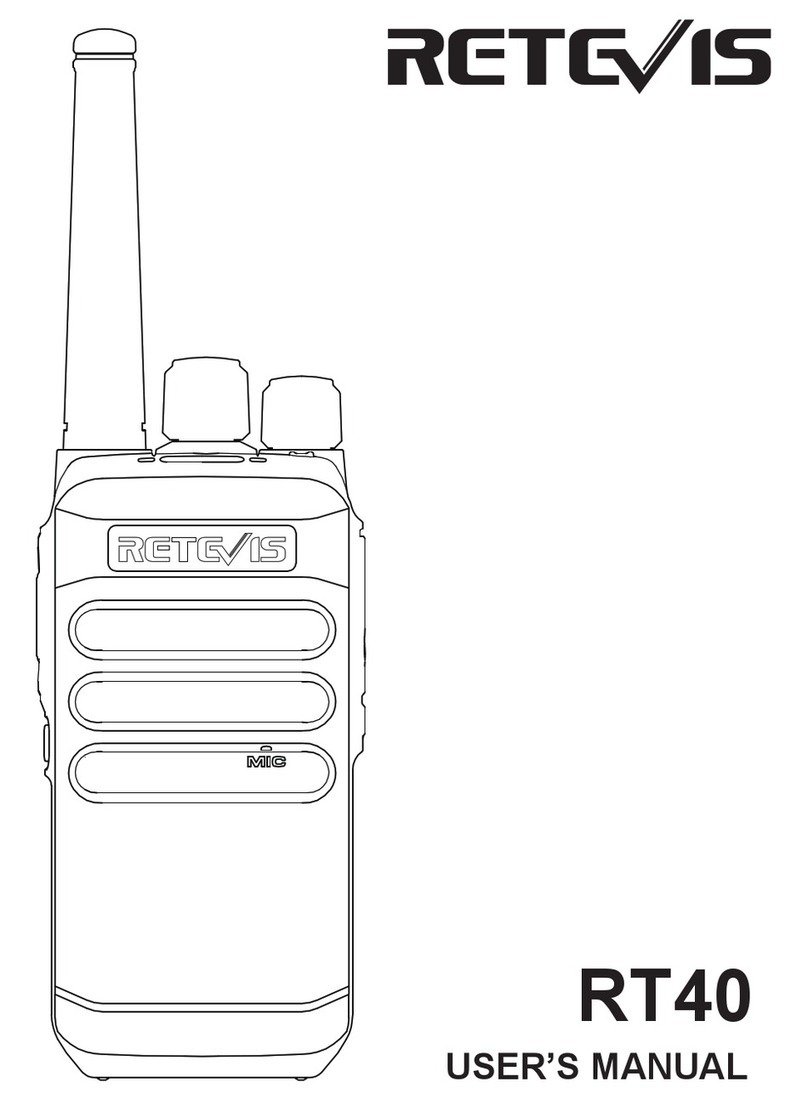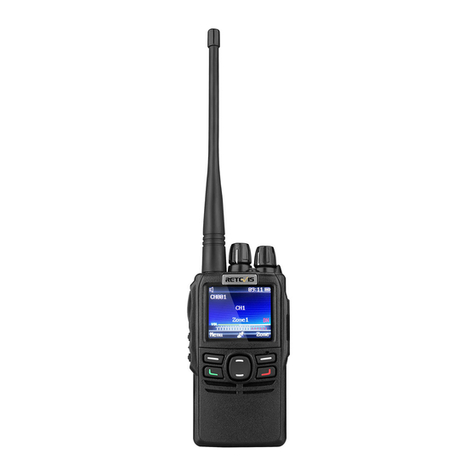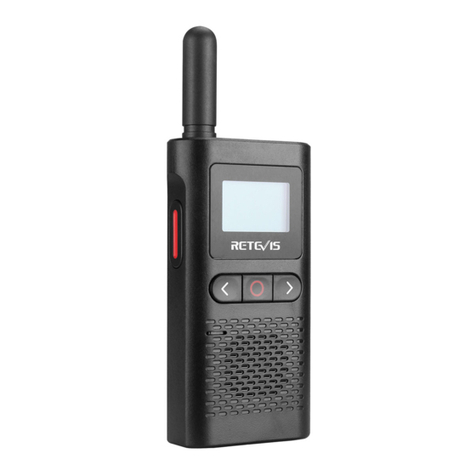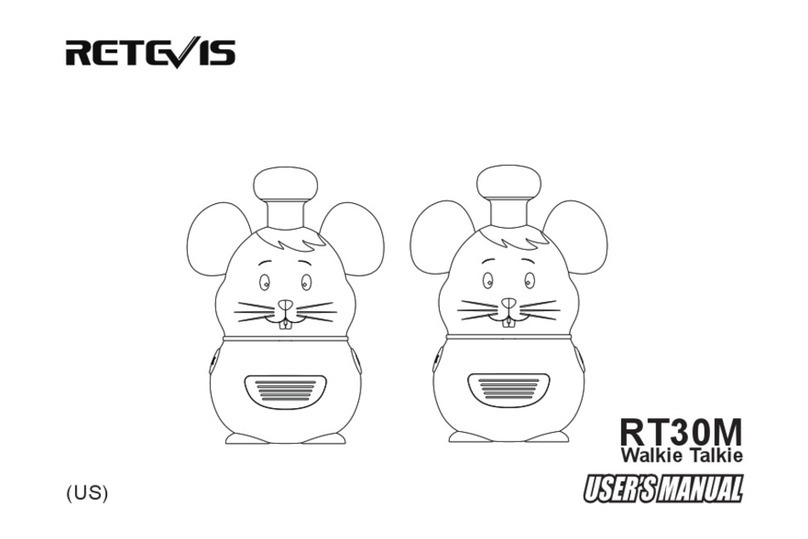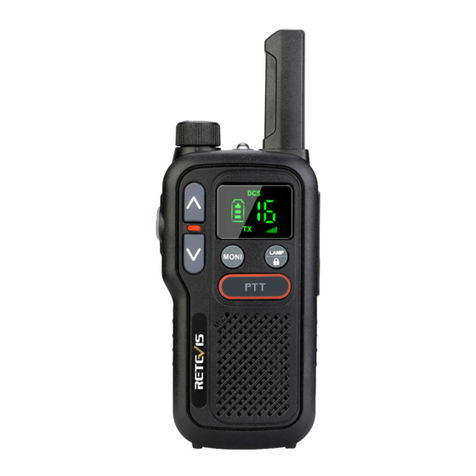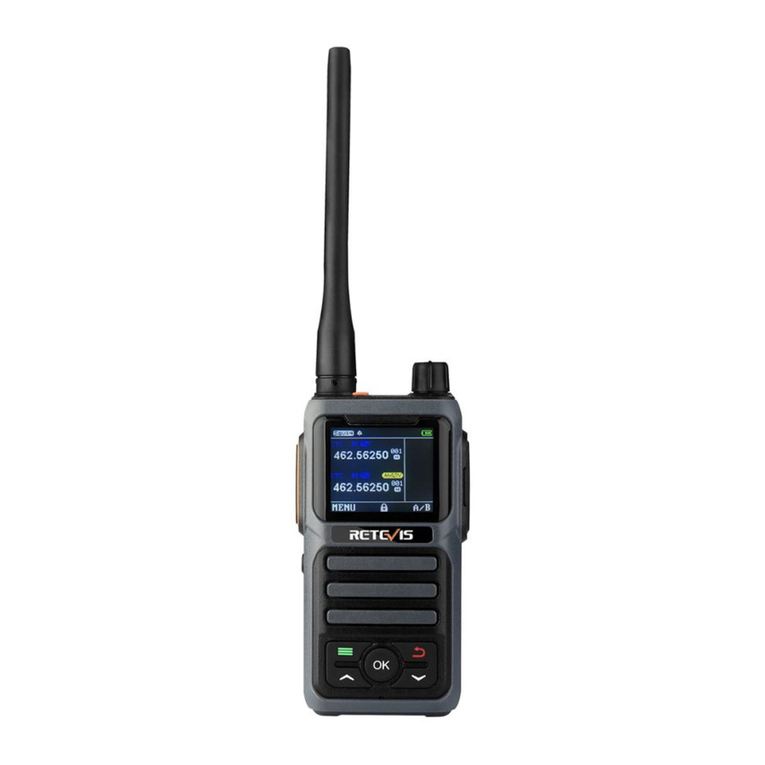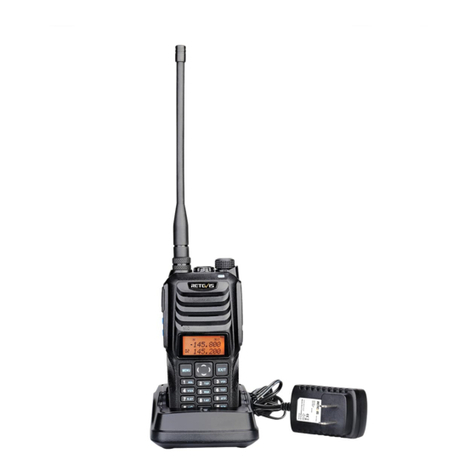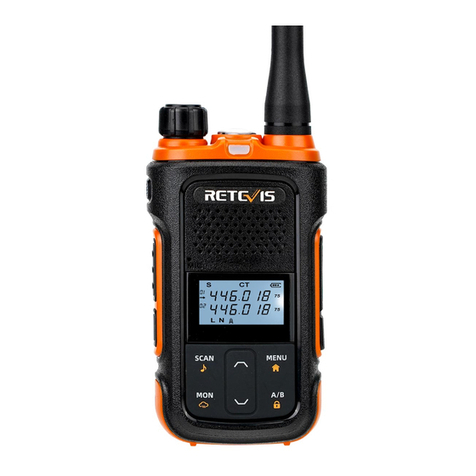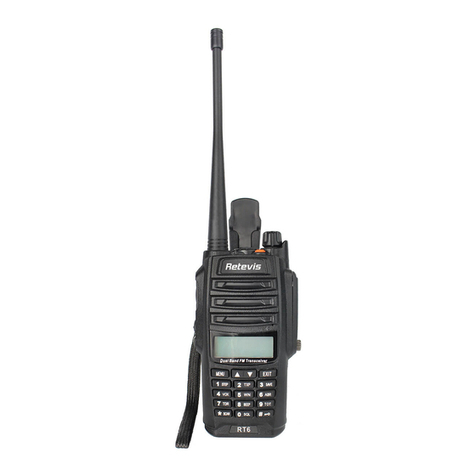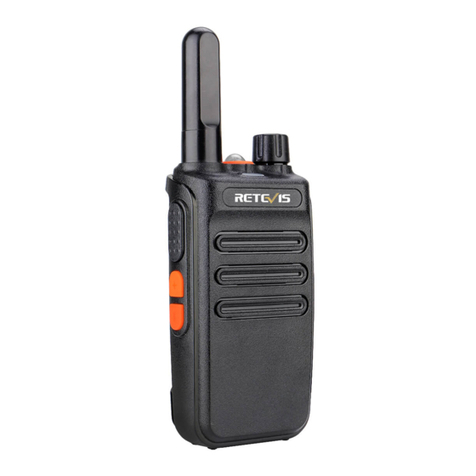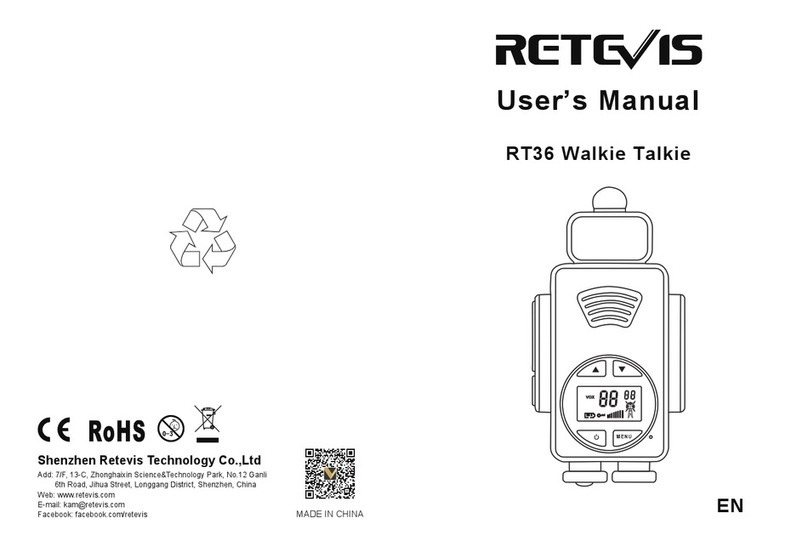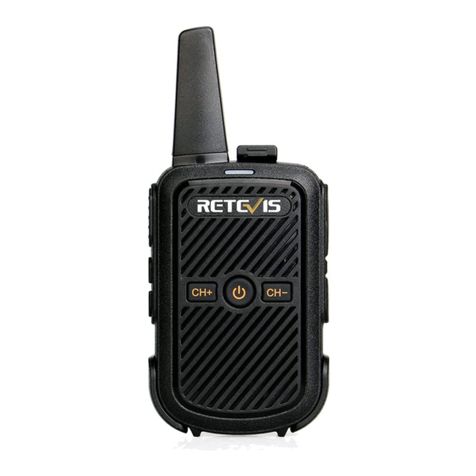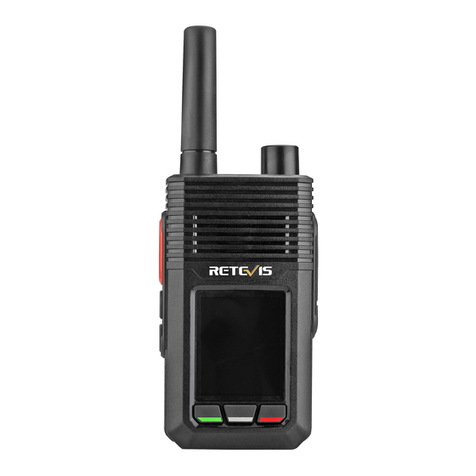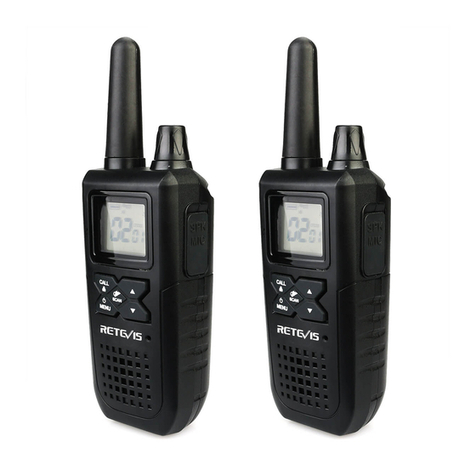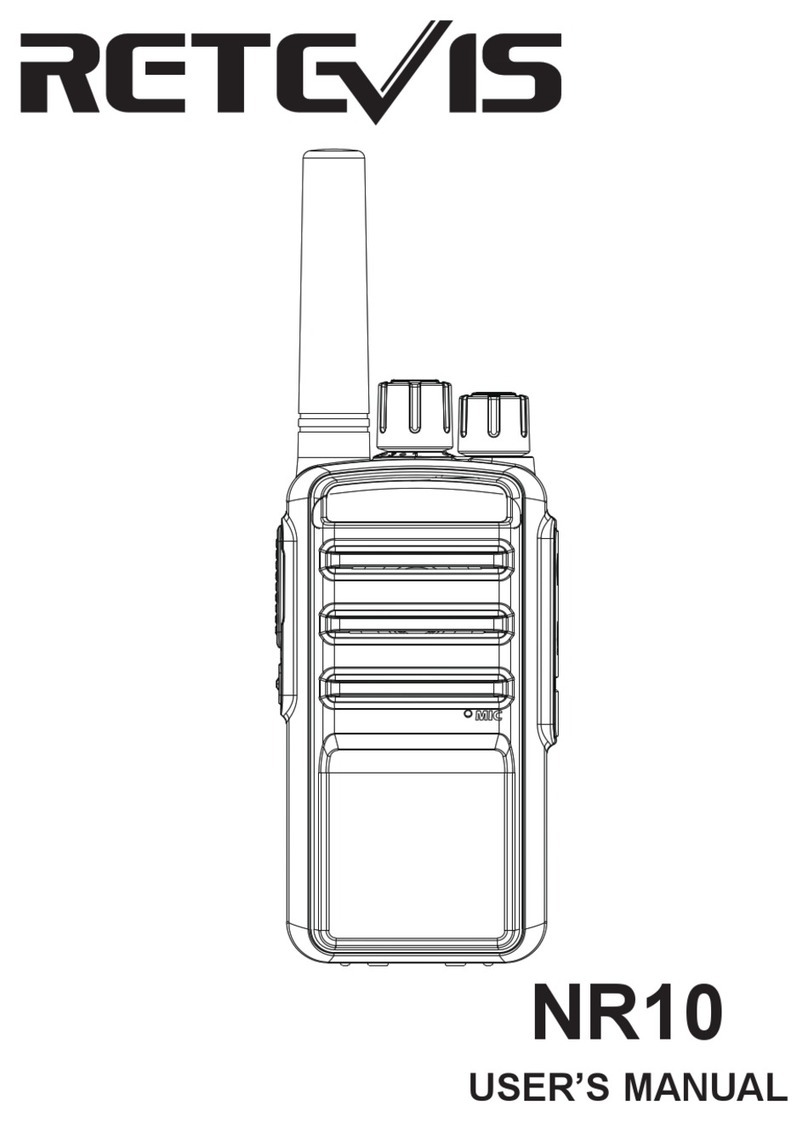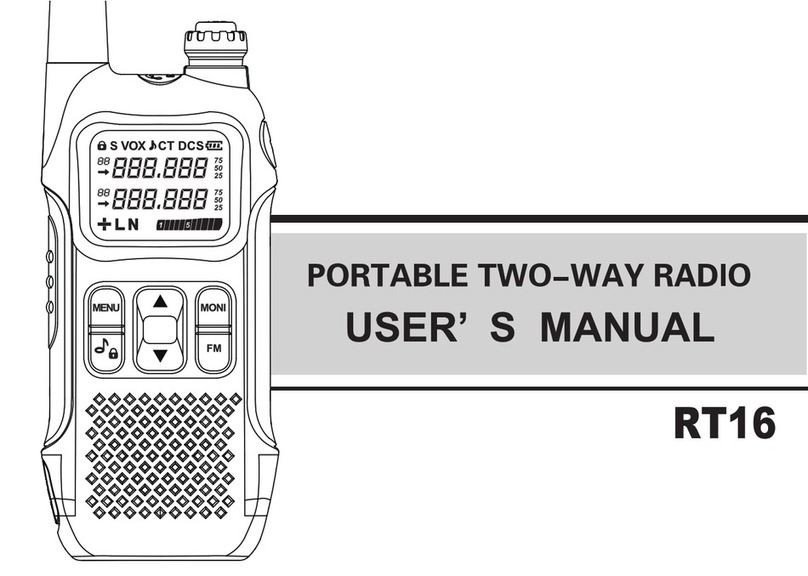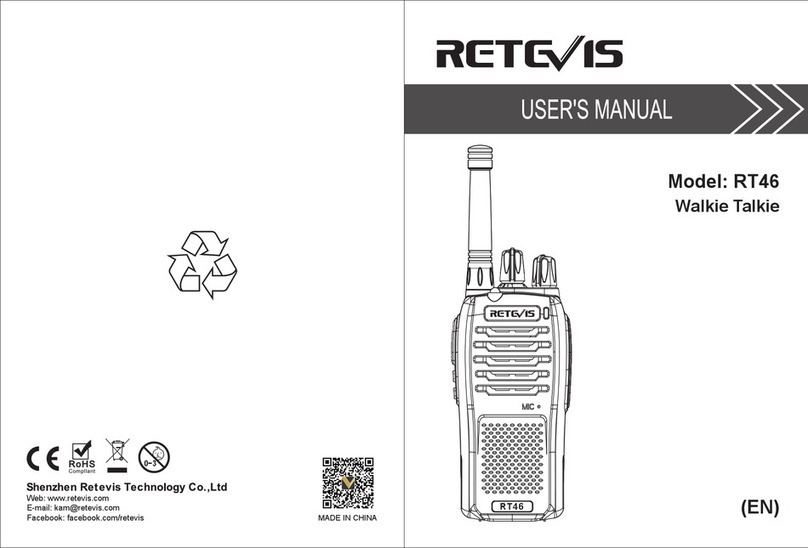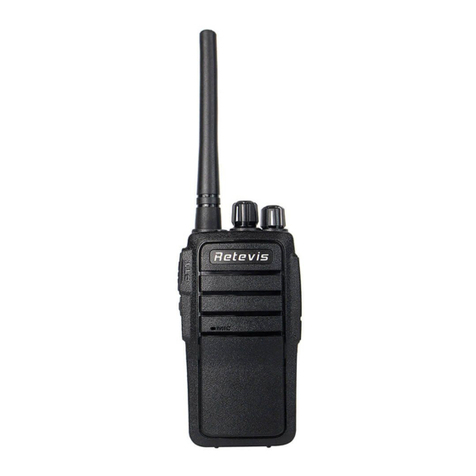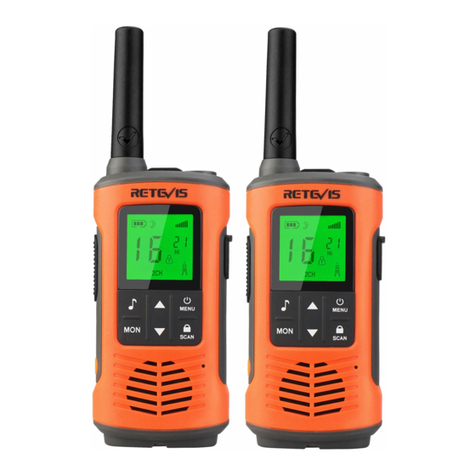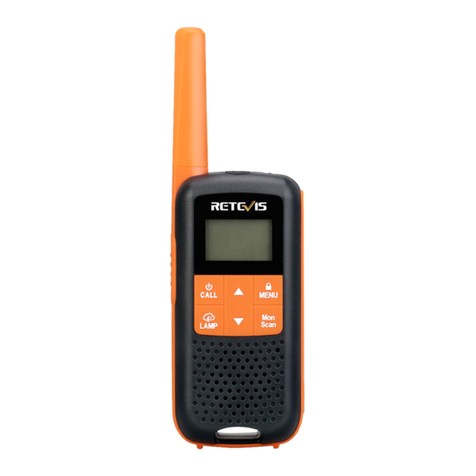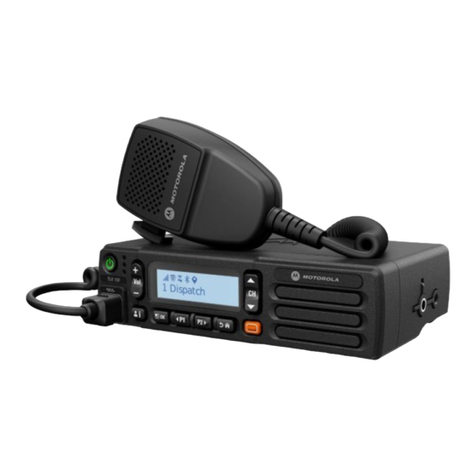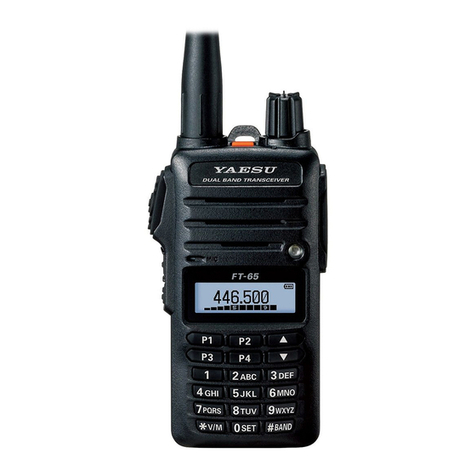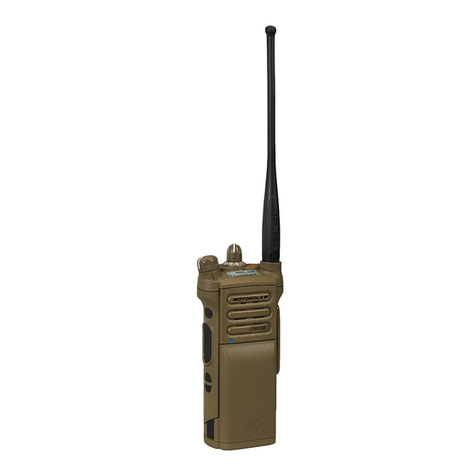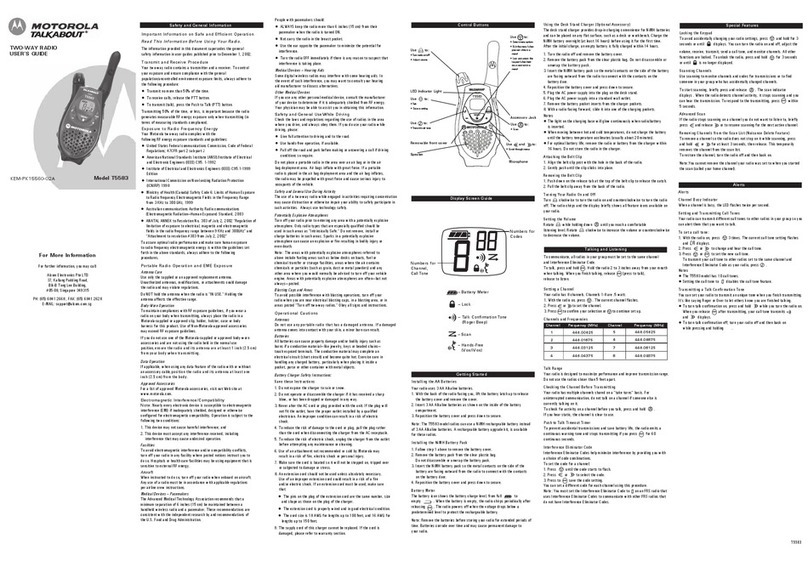
1. GETTING STARTED
1.1 Regulations and Safety Warnings
This device complies with Part 15 of the FCC Rules. Operation is subject to the following two conditions:
(1) This device may not cause harmful interference.
(2) This device must accept any interference received, including interference that may cause undesired operation.
Important: Any changes or modifications not expressly approved by the party responsible for compliance could
void the user's authority to operate this device. Your radio is set up to transmit a regulated signal on an assigned
frequency. It is against the law to alter or adjust the settings inside the radio to exceed those limitations. Any
adjustments to your radio must be made by qualified technicians.
To be safe and sure:
• Never open your radio’s case.
• Never change or replace anything in your radio except the battery.
Your radio might cause TV or radio interference even when it is operating properly. To determine whether your
radio is causing the interference, turn it off. If the interference goes away, your radio is causing it. Try to eliminate
the interference by moving your radio away from the receiver. If you cannot eliminate the interference, the FCC
requires that you stop using the radio.
Hazardous Environments: Do not operate the radio in hazardous environments. Explosion or fire may result.
Do not operate the radio near unshielded electrical blasting caps.
Under certain conditions, radios can interfere with blasting operations and may cause an explosion. Turn your
radio OFF to prevent accidental transmission when in a blasting area or in areas posted: "Turn off two-way radio."
Construction crews often use remote control RF devices to set off explosives.
Care and Safety: To clean the radio, use a soft cloth dampened with water. Do not use cleaners or solvents
because they can harm the body of the unit and leak inside, causing permanent damage. Use a dry, lint-free cloth
to clean the battery contacts.
RF Exposure Information
WARNING! Read this information before using the radio. In August 1996 the Federal Communications
Commission (FCC) of the United States with its action in Report and Order FCC 96-326 adopted an updated
safety standard for human exposure to radio frequency electromagnetic energy emitted by FCC regulated
transmitters.
Those guidelines are consistent with the safety standard previously set by both U.S. and international standards
bodies. The design of the radio complies with the FCC guidelines and these international standards.
Never allow children to operate the radio without adult supervision and the knowledge of the following guidelines.
WARNING! It is up to the user to properly operate this radio transmitter to insure safe operation. Please adhere to
the following:
Use only the supplied or an approved antenna. Unauthorized antennas, modifications, or attachments could impair
call quality, damage the radio, or result in violation of FCC regulations.
Do not use the radio with a damaged antenna.
If a damaged antenna comes into contact with the skin, a minor burn may result. Please contact your local dealer
for a replacement antenna.
Hand-held Operation (Held-to-Face)
This device was evaluated for typical hand-held (held-to- face) operations with a 1 inch spacing from the front of
the radio. For hand-held operation, the radio should be held 1 inch from the user's face in order to comply with
FCC RF exposure requirements.
For more information about RF exposure, please visit the FCC web site at www.fcc.gov.
Body-worn Operation
This device was evaluated for body-worn operations with the supplied belt-clip accessory. (All necessary
accessories are included in the package; any additional or optional accessories are not required for compliance
with the guidelines.) Third party accessories (unless approved by the manufacturer) should be avoided as these
might not comply with FCC RF exposure guidelines.
For more information about RF exposure, please visit the FCC web site at www.fcc.gov.
1
